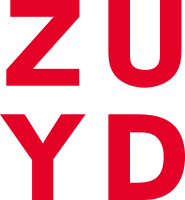This is a bachelor thesis written in 2021 by a student for SURD.
Because of various developments within today’s society, the urban area is becoming more transdisciplinary and more complex which results in failure of existing urban development models. A relatively new tool to organise development processes is the living lab concept. The European Network of Living Labs defines the concept as an ‘’user-centred, open innovation ecosystem based on a systematic user co-creation approach, integrating research and innovation processes in real life communities and settings’’.
The purpose of the graduation research is to gather more insights in the organisation and process model for living labs to define the LAL, a future living lab in de province of Limburg focussed on sustainable neighbourhood development, in a qualitative better and more efficient way. Therefore, the main research question is How can living labs, aimed at urban development, contribute to sustainable neighbourhood development in the province of Limburg? To find an appropriate answer, there is made use of qualitative research methods: A desktop research in combination with a case study between six living labs and by visiting the Belgium Living Lab Day conference 2017.
According to the desktop research, there are four types of living labs, based on the four types of stakeholders in living labs: Enabler-, Provider-, Utilizer- and User-driven. Furthermore, living labs can be divided into three layers; The set of actors (Macro), living lab projects sorted by methodology (Meso) and the user involvement (Micro). Next to this, both policy documents Provinciaal Omgevingsplan 2014 and the Sociale Agenda Limburg 2025 offer content and context to the living lab concept. In the North, the focus is on tourism, culture, logistics and agri- and horticulture. In the Middle, the focus is on working, living and recreation. And in the South, the focus is on international innovation structures and national green structures within rural and urban areas. The second policy document offers chances to enhance the user involvement and bottom-up participation.
The case study provides the experiences formula – a new practical tool – for the organisation and process model of living labs. Empathy in (end-)users, student involvement, visibility & accessibility, long-term vision & leadership, stakeholders’ expectations, financial & political sustainability, networking structure, process & results and communication turn out to be important themes within the organisation and process model for living labsfocussed on urban development.
However, discussion remains about funding models, political commitment, the use involvement strategy and the use of utilizers, such as private companies, within living labs focussed on urban development. Further research should, therefore, be focussed on one of these four topics to improve the experiences formula.
